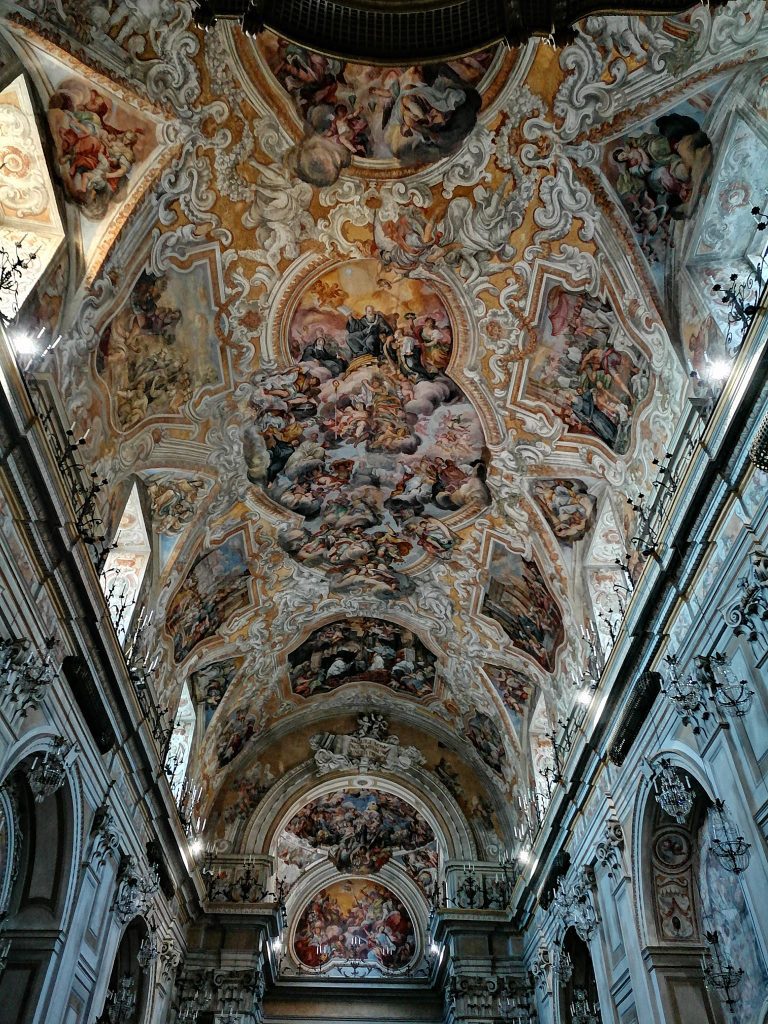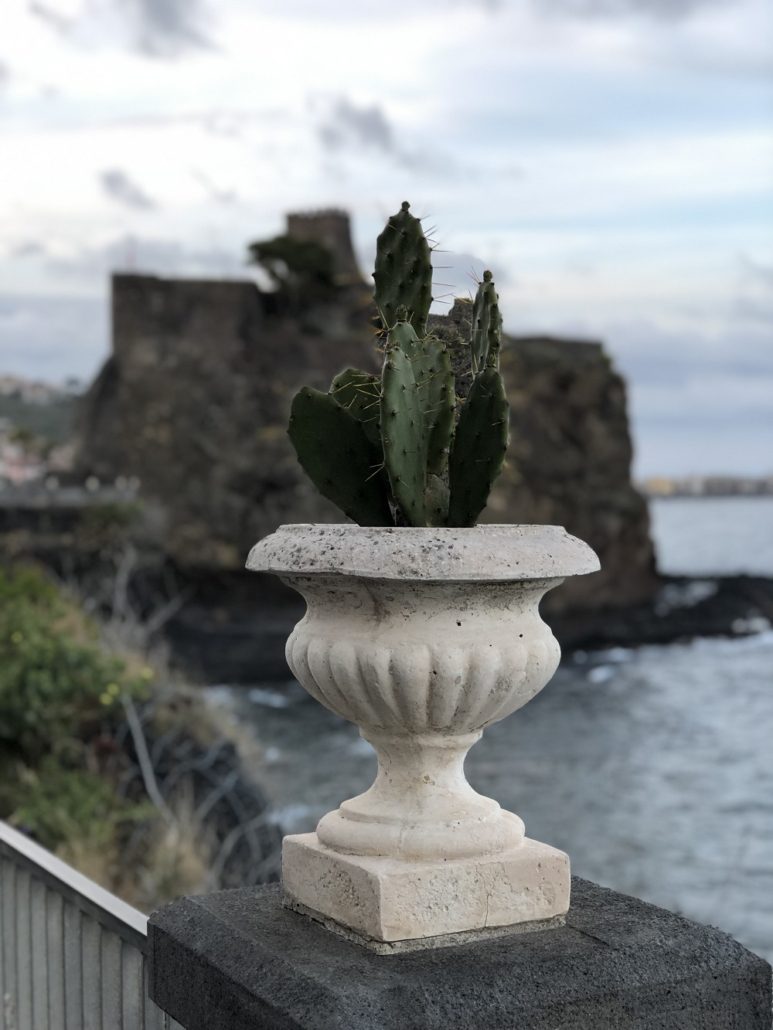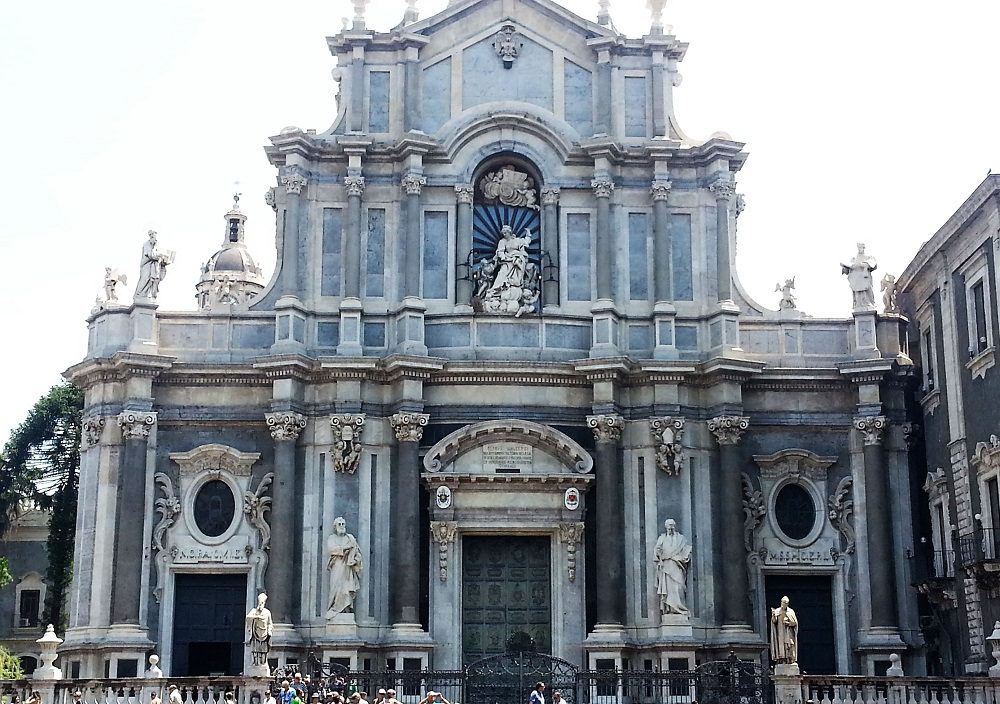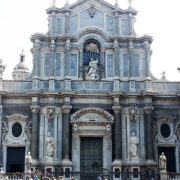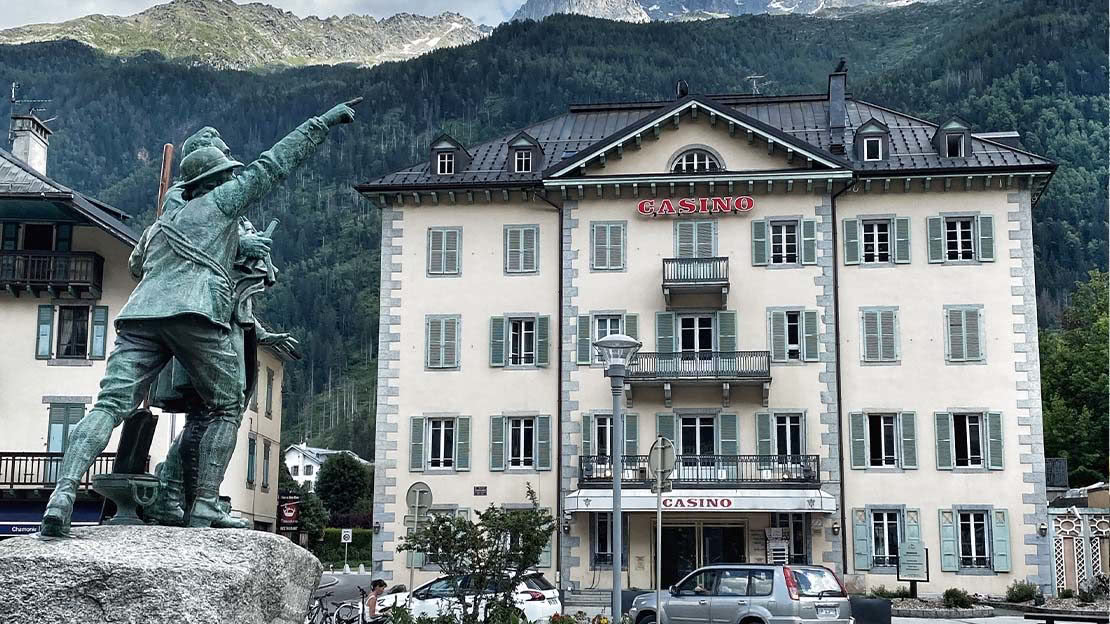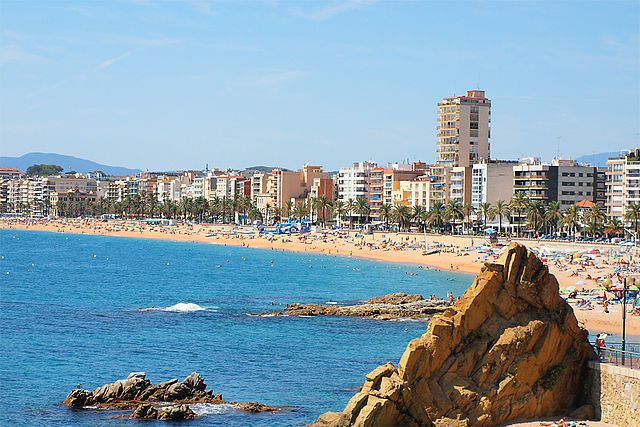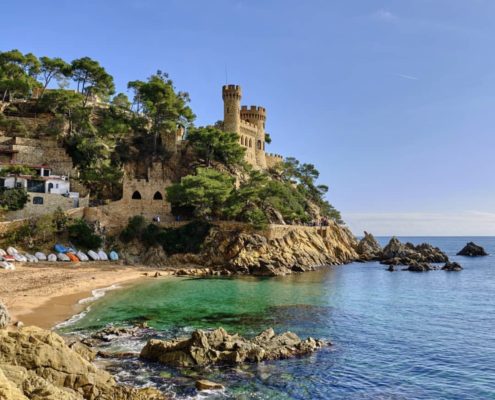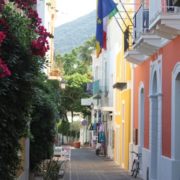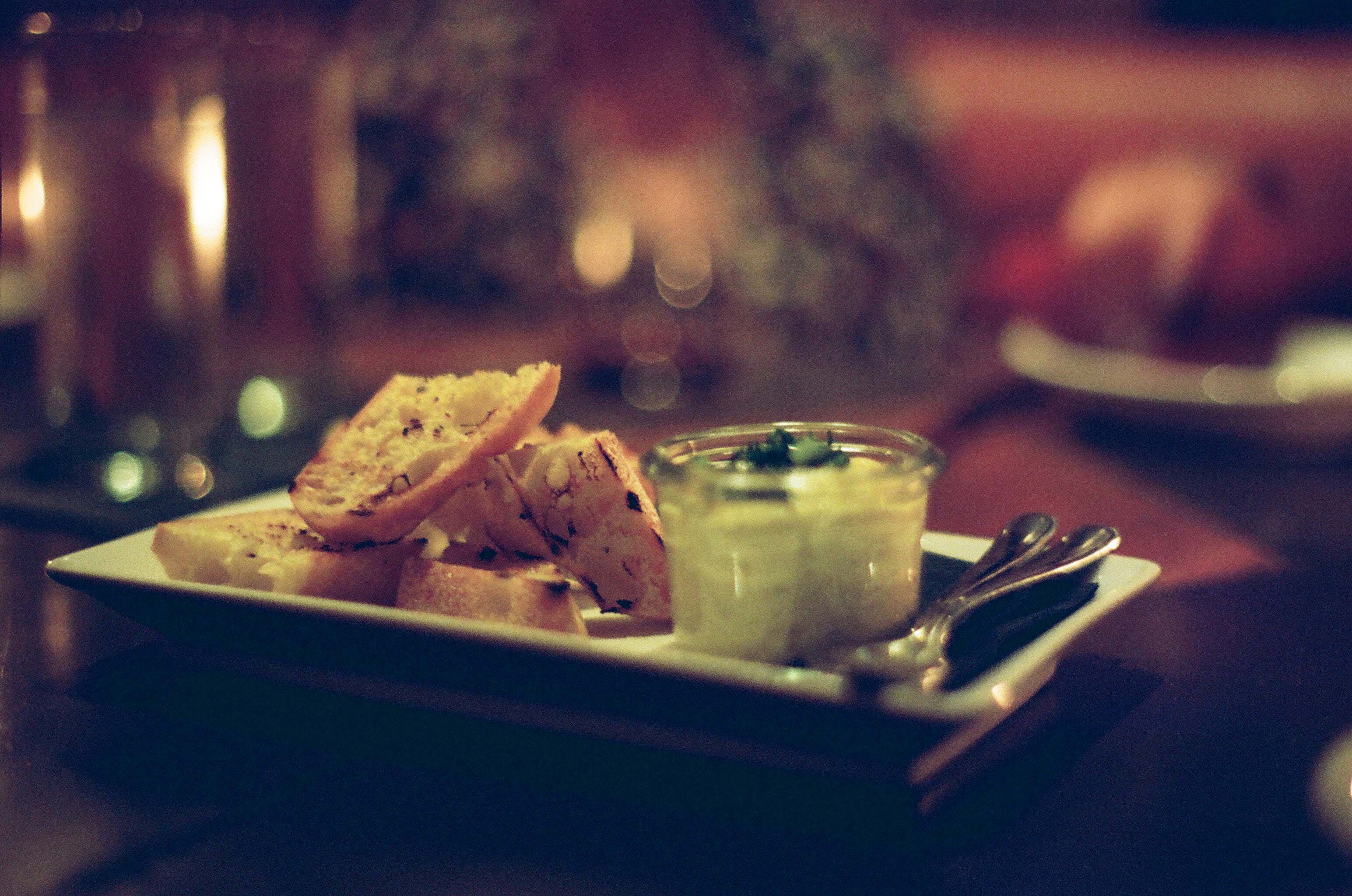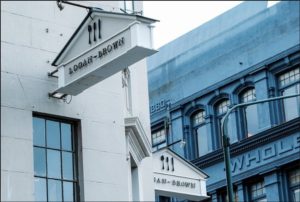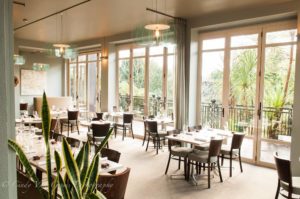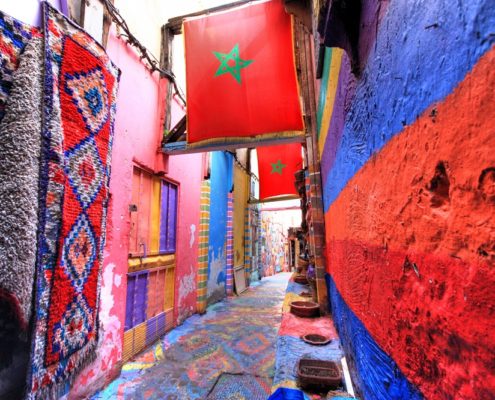Discover the City of Catania in Sicily
0 Comments/in Blog, Travel Blog/by Dominique RizzoDiscover the City of Catania in Sicily
Where is it?
Catania is the second largest city in Sicily after Palermo, and among the ten largest cities in Italy. Its located on the eastern coast of Sicily at the foot of Mount Etna, the biggest volcano in Europe. Catania faces the Ionian Sea which includes the gulfs of Squillace and Taranto (Italy) and Arta, Patras, and Corinth (Greece). The main Ionian ports are Syracuse, Catania (Sicily), Taranto (Italy),Corfu (Ionian Islands), and Patrai (Greece).
How did Catania it gets its name?
The history behind Sicily and each of its cities is a tangled story of conquests. Historically the name Catania can be found in three stories –
- Old Sicilian dialect “Katane” which means “Grater“. The name was undoubtedly inspired by the territory shaped by the lava on the slopes of Etna, full of rocky and sharp scenarios formed by the cooling lava that can just “grate” anyone who recklessly ventures.
- This involves the more modern and popular Latin. “Catinum“, ie: Recipient, Basin for the natural conformation in the shape of a hollow of the hills around the city or as a reference to the basin of the “Flat basement” that houses the city.
- Sees the hand of the Greeks who used the word “Aitnè” to name the volcano that later became “Etna” . The Greeks used the prefix “Katà“, or “Supported” or “Near” to indicate this settlement located just below the imposing volcano. So Katà-Aitnè or: Catania.
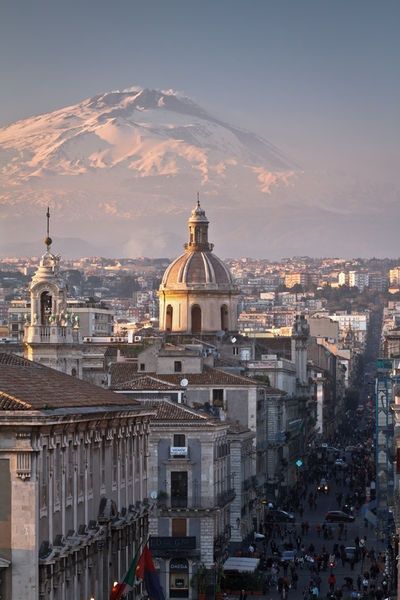
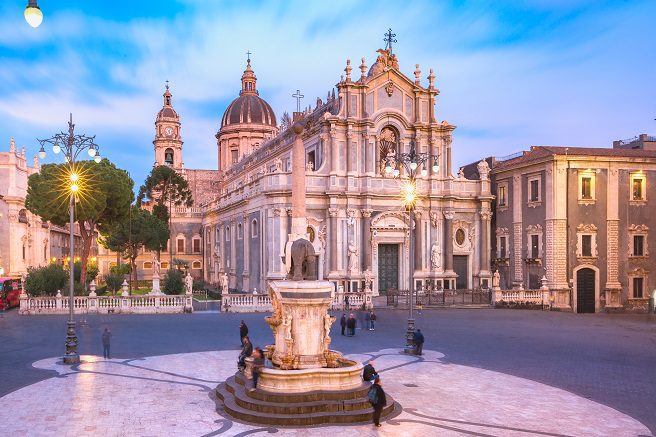
“The motto of Catania is ‘Melior de cinere surgo’: From the ruins, I emerge stronger.”
The History of Catania…in a nutshell
The area of Catania was settled early by Sicels. In 729 B.C. Chalcidian Greeks from the nearby town of Naxos founded Katane, which flourished as a Greek trading town until the 5th Century B.C. The tyrant Hieron I of Syracuse moved the inhabitants of Katane to Leontinoi, named the town after the nearby volcano Aitne and settled more than 10,000 new settlers into the city. After Hieron’s death, the original inhabitants moved up to the southern slope of Mount Etna again and returned to their city. After being destroyed by a lava flow and then rebuilt Dionysius I of Syracuse conquered the city, enslaved the population and settled Campanian soldiers in Katane.
Rule Under The Romans
The city flourished again thanks to the fertile volcanic soil which aided agriculture. Under the Romans Catania was a Civitas decumana and part of the Roman province Sicilia. Many buildings such as the Roman theatre, the amphitheater and the baths bear witness to the blossoming of the city under the Roman Empire. The Roman Theatre is one of the best examples of Roman architecture to survive centuries of natural disasters.
Catania in the Middle Ages: Prosperity, earthquakes and plague
During the Byzantine and Arab rule, Catania lost its importance and was outstripped by other Sicilian cities like Palermo and Syracuse. Fortune was less than favourable to Catania over the course of history. Although it came to prominence as a commercial and maritime centre under the Normans again, the earthquake of 1169 with 15,000 deaths and the devastation caused by Emperor Henry VI of Hohenstaufen in 1194 led to tough times yet again for the city.
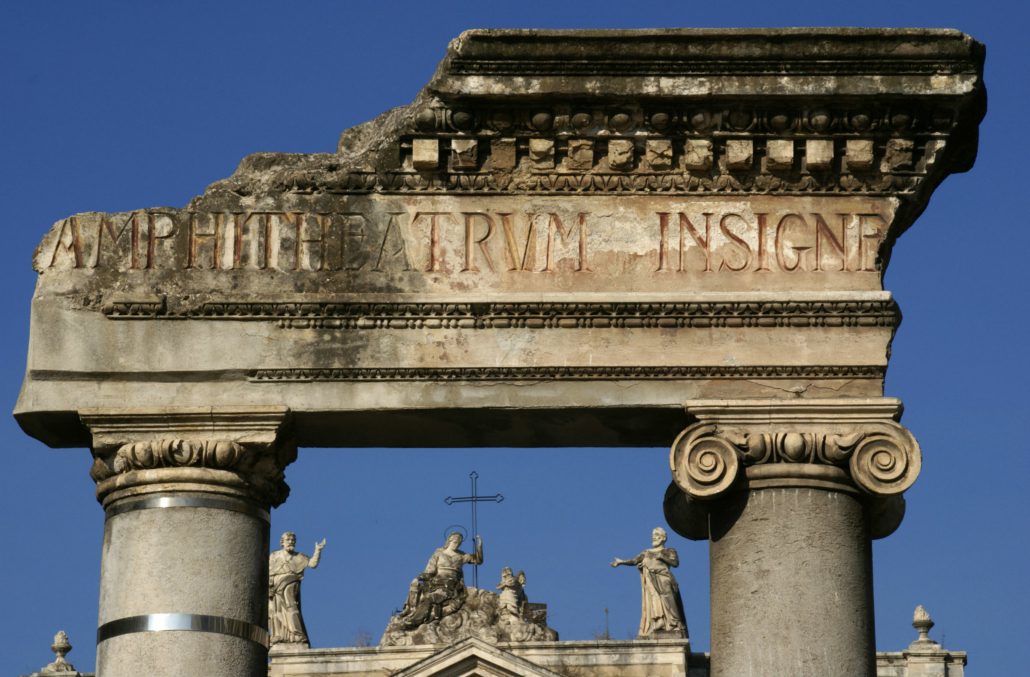

The Renaissance and the birth of Sicilian Music and Literature
During the 14th century, and into the Renaissance period, Catania was one of Italy’s most important cultural, artistic and political centers. Not only was it the site of Sicily’s first university, it has been the native or adopted home of some of Italy’s most famous and influential artists and writers, including composers Vincenzo Bellini and Giovanni Pacini, and the writers Giovanni Verga, Luigi Capuana, Federico De Roberto and Nino Martoglio.
It was not until 1434 that Catania gained importance again thanks to the establishment of the university, the oldest in Sicily and one of the oldest in Italy, by the Spanish House of Aragon and became the second largest city in Sicily.
Destruction of Catania 1669/1693 and history to the present day
The late 16th and 17th Century saw some significant developments in the history of Catania. In 1576 a major part of the population died due to the plague; in 1669 a lava flow destroyed the western part of the city; and, in 1693 a heavy earthquake destroyed the rest of Catania. Catania’s present day appearance is thanks to its reconstruction in the 18th Century, following the designs by Giovanni Battista Vaccarini using the iconic dark lava stone seen in many of the towns surrounding Etna.

Discover the beauty of Catania
The major feature of Catania is its architecture, which is predominantly baroque and feature mainly theatricality characteristics.
This style dominated Europe in the 17th century as a result of the reformation/counter-reformation where the statement given was one of grandeur.
The preceding style was Renaissance, while the succeeding was Neoclassicism. The three major features are a near excessive amount of detail (statues, lots of gold, columns and pilasters, garlands and wreaths with tall facades and frescoes often featuring trompe-l’œil (visual illusion in art, especially as used to trick the eye into perceiving a painted detail as a three-dimensional object).
Baroque from Catania has several unique features such as use of dark lava stone (basalt), the Bell in the facade itself and grotesque masks and putti. Due to the natural disasters and the destruction of the city , the centre now shines in the Sicilian Baroque style. Whether the Piazza del Duomo with the black lava elephant, the Roman Theatre, the Villa Bellini, the Cathedral of Sant’Agata or any of the numerous churches – Catania offers its visitors a wealth of interesting places and tourist attractions.
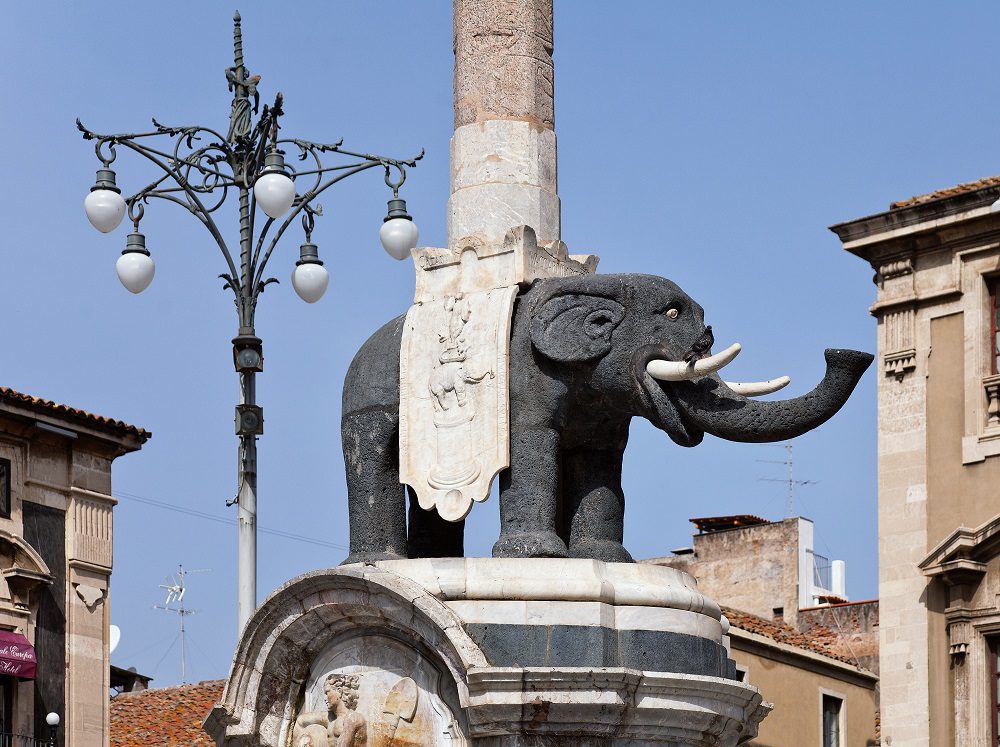
The top 5 sites of Catania you wont want to miss …
- As the main square in Catania, the Piazza Del Duomo has a great deal to offer in terms of attractions. Located in the heart of the city close to the port area, this central square is a regular gathering place for the locals and a great tourist spot. In the center of the square is the impressive Fontana Dell’Elefante, the Fontana Dell’Amenano, Catania Cathedral and the Palazzo degli Elefanti – All fine pieces of architecture. Furthermore there is a series of cafes and restaurants with ideally situated outside seating so you can have a drink, a bite to eat, and enjoy the fine Sicilian weather. The Piazza Del Duomo is a great place to start a walking tour of Catania, and from here you are in close proximity to many of the main sights.
- Castello Ursino has been standing proud above Catania since the 13th century. Today, the castle is an art-themed visitor attraction packed with items from the city’s Roman Theatre, alongside Greek artefacts and religious paintings. Like most castles, Ursino is perched atop a hill and therefore offers excellent views across Catania’s red-hued rooftops. The courtyard is also occasionally used for concerts.
- Believed to have been built in the 2nd century CE, Catania’s Roman Theatre may look modest from the street, though inside it’s anything but. Its cobbles, columns and caves offer an atmospheric insight into Roman history – with much of it beneath street level. Over time, earthquakes and erosions have caused the lower parts to drop. As such, the orchestra area is often washed by the underground Amenano River, rendering it unusable for performances, though the amphitheatre still hosts events.
- Catania’s fish market, known as La Pescheria, is one of the most well-known in the world. Located a stone’s throw from Piazza del Duomo, this market is atop a set of volcanic-rock formed steps and ignites the senses as soon as you head towards it: the sights, sounds and – questionable for some – smells of a fish market are unmistakable. If you’re staying in self-catering accommodation, or you just love people-watching, this is the place to go.
- If you travel for approximately 10 miles to the north of Catania along the coast, you will arrive at the charming village of Aci Castello – This village was originally constructed around the castle that lies on the coast and has stood there since the Norman conquests of Sicily. The castle is indeed the main sight here and sits apart from the village on a rock outcrop facing the sea. Built in 1076 the castle has stood for hundreds of years and is an iconic landmark on this section of Sicilian coast. Today you can explore the grounds of the castle and climb up to the top battlements for fantastic views out to the sea and the surrounding countryside.
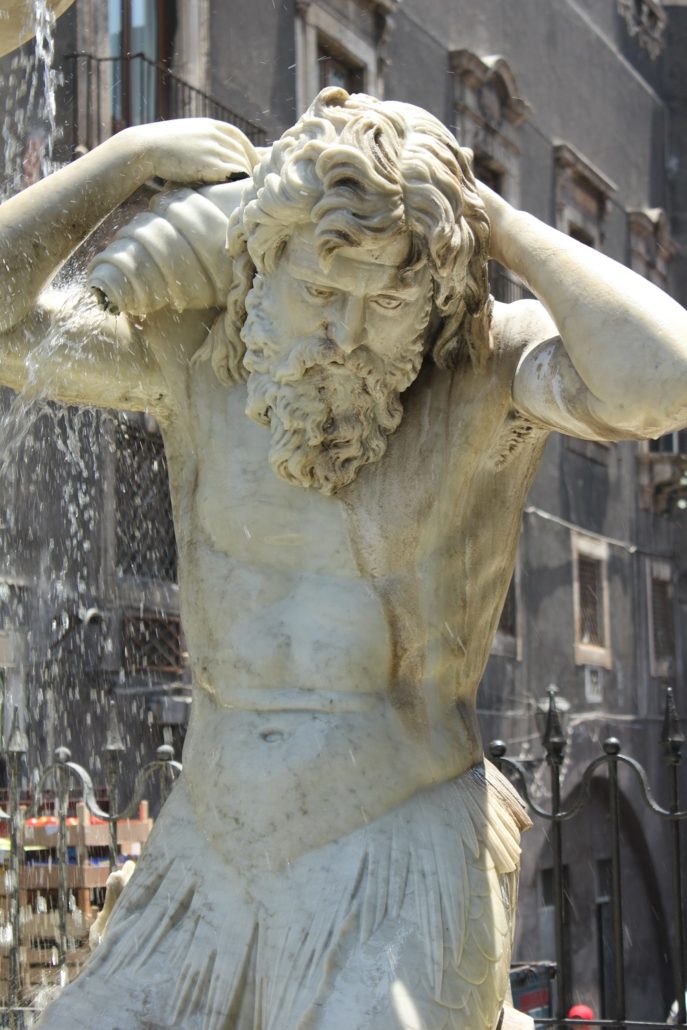
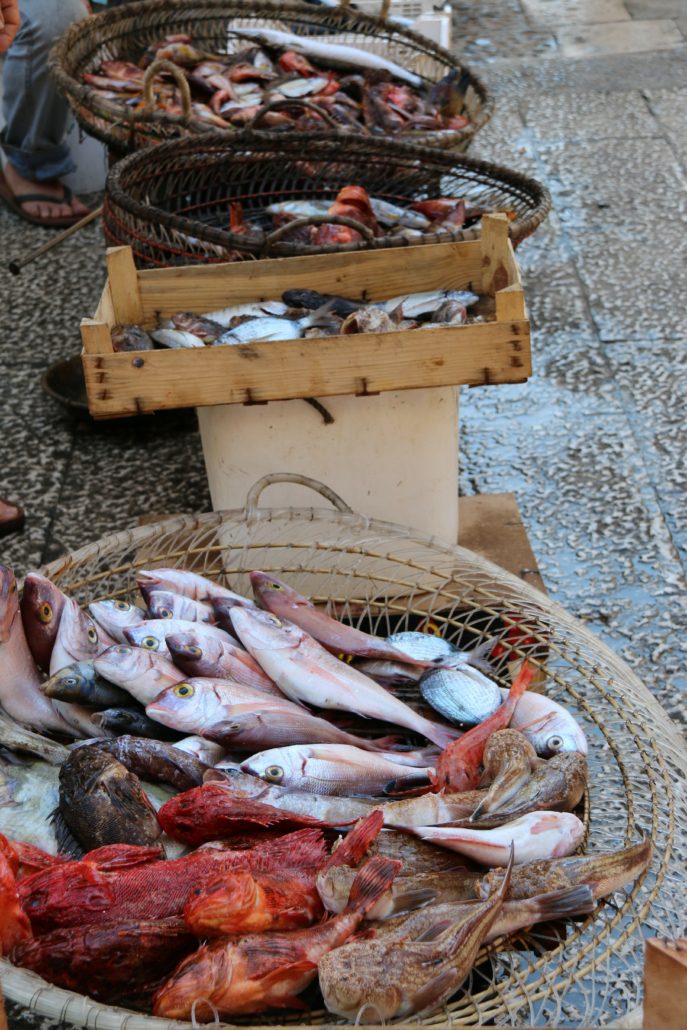
The top 6 sites in walking distance from the center of Catania
- The Cathedral of Catania is a simply beautiful structure and is a masterpiece of Norman and Baroque architecture. Located in the center of the old town, the cathedral can be found in the self-styled Piazza Del Duomo and is in close proximity to many of the other sights. Originally constructed in 1078 over the ruins of a Roman Baths, the cathedral has been restored many times due to earthquakes in the region. The front façade features a grey stone design with a series of ornate statues depicting religious figures and a large domed basilica sits at the back of the main aisle. Inside, there is a large amount of beautiful details such as the frescos at the main altar, the decorative artwork and paintings, and the tomb of the notable composer Bellini.
- A fine public space for relaxation and enjoying nature, the Giardini Bellini and the Parco Maestranze are located to the west of the Piazza Carlo Alberto in the town center. The Bellini garden is located at the east side of the park and contains a beautiful fountain and several flower beds. Furthermore there is an ornate bandstand and many varieties of tree. Aside from the Giardini Bellini, the Maestranze Park features a series of shaded walking trails covered by luscious forest.
- Located in-between the Roman Theatre and the Giardini Bellini, the Via dei Crociferi features four spectacular churches – The Church of St. Francesco Borgia, The Church of San Benedetto, The Church of St. Francis Assisi and the Church of San Giuliana. This historic street is one of the main arteries of the city and features a plethora of historical buildings. Each building has its own unique design and offers something different. Furthermore, there is also the San Benedetto Arch and the cloisters of the Jesuit College. Consider visiting this street in conjunction with a trip to the Roman Theatre.
- Considered one of Italy’s most magnificent opera houses, the grand Teatro Massimo Bellini dazzles with its imposing Sicilian baroque-style façade and opulent interiors. Admire its fin de siècle beauty during an opera or concert in the evening, or join a tour during the day to see its ornate marble foyer and 19th-century boxes.
- Taking its name from Mount Etna, the imposing volcano that looms over the city, Via Etnea is one of Catania’s most important thoroughfares, lined with shops, restaurants, and cafés. A lively destination both day and night, Via Etnea connects two of the city’s top attractions—Piazza Duomo and Villa Bellini.
- Known as the “Sicilian Sistine Chapel,” this baroque church on Catania’s photogenic Via Crociferi is home to dazzling frescoes by the 18th-century painter Giovanni Tuccari, sumptuous stuccoes, a lavish choir loft, and an ornate marble altar. Don’t miss the Scalinata dell’Angelo, a stone staircase decorated with statues of angels. Part of the Benedictine Monastery complex, the Chiesa di San Benedetto is one of the baroque jewels lining Via Crociferi, and a highlight of Catania’s historic center. Admire the church’s facade and interiors on a walking tour that stops at the Sicilian baroque churches along Catania’s picturesque thoroughfare. The Chiesa di San Benedetto is located along Via Crociferi in Catania’s historic center, an easy walk from the Catania Centrale train station and most major sights.
